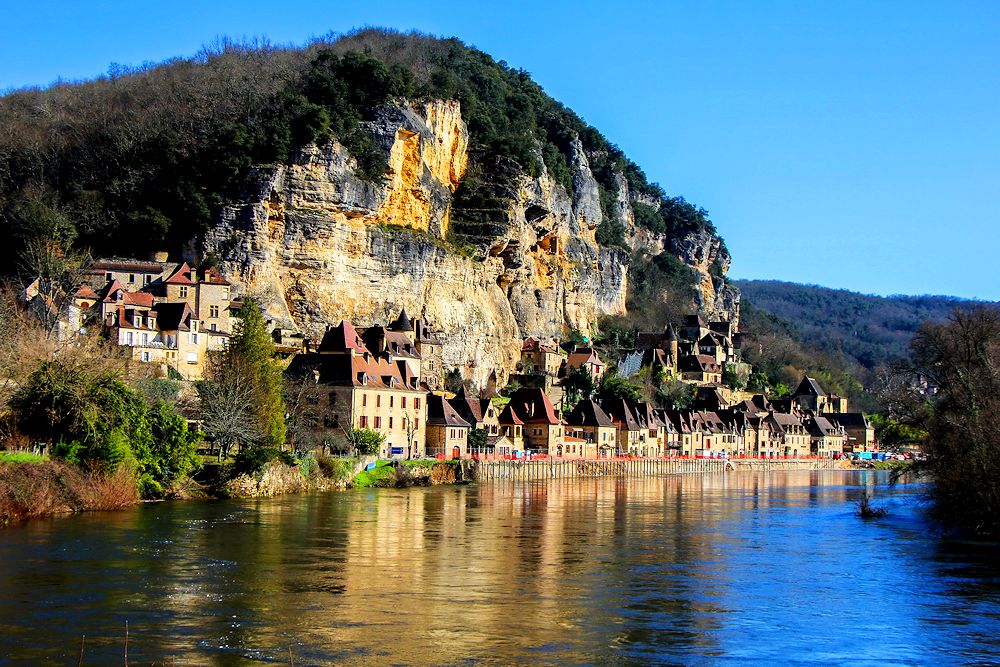It is believed that the site of La Roque Gageac has been inhabited since Prehistoric times, and developed particularly during the Gallo-Roman period. Confronted with the threat of Viking invasions and numerous wars, the protection of La Roque Gageac was greatly enhanced by the development of a new sort of fortification: being nestled into the high, south-oriented cliff face means the fortress is naturally impregnable.
The construction of this amazing, carved building began in the 12th century and continued to be improved throughout the 17th century, before being dismantled in the 18th century. To access it, one must be courageous enough to climb the 140 steps (including 32 carved in the same stone). On the 7th January 2010, a serious rock fall occurred, destroying sections of the fortress. This event follows those which happened in 1920, 1957 (3 deaths) and 1994. Since the 2010 rocksfall, the site has been closed to the public and it is uncertain whether it will re-open in the near future.
During the Middle-Ages, La Roque Gageac was a bustling river port with 1 500 inhabitants, (compared to only 415 today). The Dordogne River was a major trading passageway and the activity of many fishermen and river sailors benefited from it. It is not surprising that the bishops of Sarlat (10 km away) made La Roque Gageac the site of their summer residence.

The medieval village is a mix of humble cottages and the dwellings of the former gentry, its houses squeezed between the Dordogne River and the towering cliff. The stepped narrow streets lead up to the Manoir de Tarde, which dominates the village. The manor is linked to the memory of Jean Tarde (1562-1636), who was an historian, as well as a cartographer, mathematician, astronomer, theologian, philosopher, and a friend of Galileo. This Renaissance manor consists of two main sections, with pointed gables and enchanting mullioned windows.
Halfway up the cliff, next to a little Romanesque church, a surprisingly exotic garden grows extravagant Mediterranean vegetation: more than 20 species of palm trees, banana trees, lemon trees, olive trees, fig trees etc…
The micro-climate that La Roque Gageac benefits from can be explained by its southern orientation and the absence of wind. From the church, marvel at the superb view of the Dordogne River often dotted with canoes and barges. The village is at its best in the late afternoon when the crowds have left and stone walls glow honey-colored in light of the setting sun.
Looking for accommodation near La Roque Gagaeac ?
B&B Ferme de Tayac, lovely 12th Century buildings, once monastery and farm. Its one meter thick walls, oak beam structures, and rooms carved out of the rock, make it a wonderful place to stay whilst you explore this fascinating part of the Vezere Valley. Your stay will be enhanced by the friendly hospitality and homely comfort offered by your hosts Suzanne and Mike. You will enjoy the pleasant garden, the refreshing swimming pool, and maybe the occasional five minute stroll into Les Eyzies, famous as the “Prehistoric Capital of the World” It is here that Cro Magnon man our ancestor made it one of the richest and most exciting of archaeological areas.
Ferme de Tayac is just a 20 min. drive to La Roque Gageac – www.fermedetayac.com


